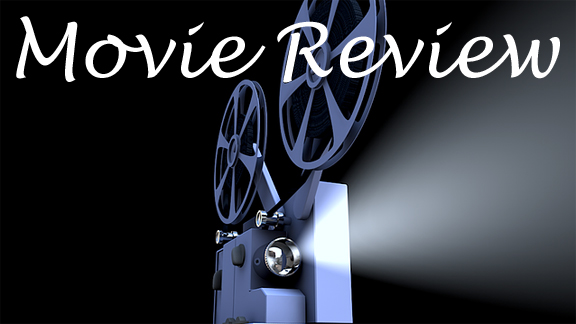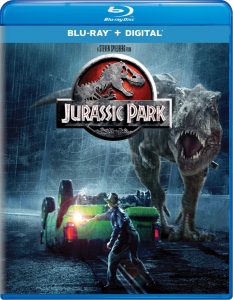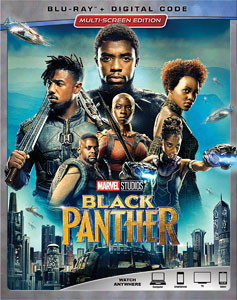This blog series chronicles my first viewing of the complete MCU movie saga. I’ll examine each film under various categories that reflect popular discussion points. Next up is the 18th film, “Black Panther” (2018):
STRENGTHS
It’s predictable at this point, but “Black Panther” is yet another MCU film that looks amazing. In this case, the visual feast is the country of Wakanda, a mix of primitive settings (the challenge fights atop a waterfall, with colorfully garbed citizens watching from cliff-side perches) and high-tech settings (the underground mag-lev train and Shuri’s science lab). African traditions are peppered into the costumes and jewelry, the “Wakandan” speech accents (which somehow don’t come off as silly) and composer Ludwig Göransson’s score.
WEAKNESSES
T’Challa’s (Chadwick Boseman) hero’s journey is quite standard. And the backstory of how vibranium got smuggled out of Wakanda in the first place could’ve been more crisply presented.

“Black Panther” (2018)
Director: Ryan Coogler
Writers: Ryan Coogler, Joe Robert Cole, Stan Lee
Stars: Chadwick Boseman, Michael B. Jordan, Lupita Nyong’o
HEROES
T’Challa/Black Panther, building on his appearance in “Captain America: Civil War,” is a peaceful man who can be violent if necessary, as in the ritual challenges to his throne. Wise beyond his years, he has a rare ability to see how violence or neglect from a previous generation can lead to future violence. And his suit, which can dish out the kinetic energy it has absorbed, is just plain cool.
VILLAINS
Erik/Killmonger (Michael B. Jordan) has one of those “take over the world” schemes that sound impossible as soon as he announces it. Nonetheless, he is a sympathetic villain due to the fact that his uncle (T’Challa’s dad, T’Chaka) abandoned him in Oakland after killing Erik’s father, N’Jobu (Sterling K. Brown of “This Is Us”), for smuggling vibranium. Also, it’s nice to see Andy Sirkis get to play a “normal” character rather than a motion-capture creature – although Klaue isn’t entirely normal, as he has a cannon for an arm (and I don’t mean that as a football metaphor).
WOMEN
Just as “Black Panther” features a 90 percent black cast without being a “black movie,” it also has women in prominent roles without being a “women’s movie.” The military honor guard for the Wakandan king is entirely women, including “The Walking Dead’s” Danai Gurira as Okoye. Nakia (Lupita Nyong’o) is a standard MCU figure: the love interest who can also kick butt if necessary. Letitia Wright’s Shuri is delightful as T’Challa’s little sister who happens to be a tech genius who wouldn’t embarrass herself in front of Tony Stark. All of these women interact, so “Black Panther” passes the Bechdel Test with ease.
MIRROR TO REALITY
“Black Panther” is a rich text about a powerful nation’s global moral responsibility. There is no real-world nation (that we know of) like Wakanda, which poses as a subsistence farming nation but is in fact a self-sufficient nation with a high standard of living thanks to the wonderful technological properties of vibranium.

Some might compare Wakanda to the U.S., a powerful nation that uses its might to be the world’s police. Wakanda – as suggested by T’Challa’s closing speech about sharing its technology – would thus illustrate an alternative. Others might compare vibranium-rich Wakanda with oil-rich countries that might be vulnerable to invasion and nation-building by military powers. But I suspect the Wakandan military, with its futuristic vibranium-based ships and weapons, could hold its own.
The film comments on the ethics of archaeology through the fact that an ancient vibranium weapon is in a London museum. Killmonger believes it was “taken” from Africa, rather than legally obtained, and he – as a Wakandan by birth — aims to repossess it in the name of his people. Morally speaking, he has a case.
“Black Panther” taps into hot-button race relations via Killmonger, a collectivist who sees things in black and white (in both senses of the phrase). He explicitly states that he wants to use Wakanda’s military prowess to take over the world and instill black people as the holders of power. The world is too much of a melting pot for that to be achieved in any sort of clean transfer of power, but as he had been orphaned in a poor black neighborhood in Oakland, we understand where his skewed view comes from.
BEST ACTION SCENE
The street chase in South Korea is beautifully lit with neon signs, plus it’s a showcase for Shuri’s remotely driven car and Black Panther’s kinetic suit.
BEST COMEDIC MOMENT
Shuri demonstrates to T’Challa how the suit’s kinetic absorption works. The scene ends with the king flat on his back, ordering his sister to delete the footage she had been recording. It’s an obvious gag, but still fun.
WORLD BUILDING
“Black Panther” pulls back the curtain on Wakanda, an interesting country due to its extreme isolationist history and its vibranium-driven tech, and now the most important player on the MCU’s world stage. With T’Challa announcing that Wakanda aims to share its science with the world, and with the country using some of its riches for outreach programs in Oakland, the writers seem to be setting it up as a second try at the grand American experiment.
The film leaves us wondering “What if a powerful country used its powers for good?” That will eventually lead to another question: “For how long can Wakanda — and T’Challa himself – maintain principles before they become compromised?”
FINAL THOUGHTS/EXPECTATIONS
“Black Panther” is an engaging introduction to the title character, Wakandan culture and vibranium-based technology, soaked in relevant modern themes but adhering to the superhero structure. Since it was a massive box-office hit, we can expect more “Black Panther” films, and there is plenty left to mine. Hopefully the success will also lead to the MCU branching out into more areas of race, gender, ethnicity, nationality and personality types.

